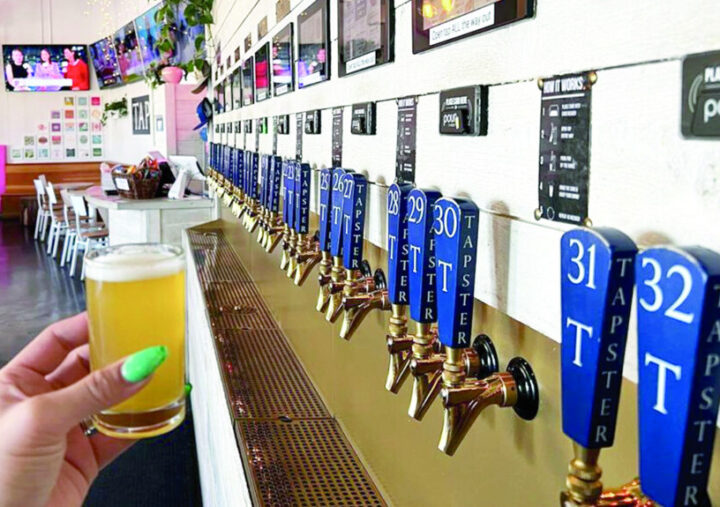
In 2019, Antonio’s Pizzeria in Ohio incorporated a draft beer wall into a new store and the response from customers was so strong that a second location of the 20-unit chain added a similar self-serve beer wall this summer. More are expected, as partner Vince Loschiavo plans to install beer walls in all units and rebrand the concept to Antonio’s Brew Wall, a testament to the popularity of self-poured beer on-premise.
Indeed, self-serve draft beer is undergoing a renaissance. Popular a decade or so ago as the craft beer boom ushered in a huge wave in draft beer choices, self-serve systems were hampered by the lockdowns of the Covid-19 pandemic. But today, marketers of the systems are providing a wider variety of models and eyeing opportunity in, well, untapped channels. David Jelinek, COO at Pour My Beer, which provides self-pour technology at some 500 locations around the country, says that in addition to bars and restaurants, food halls and “eater-tainment” venues are showing increased interest in draft beer walls. Other self-pour systems, such as mobile stations and trailers, are ideal for limited-service hotels, seasonal venues like golf and country clubs, and festivals and farmers markets, he says. “The interest in self-pour systems is growing at a nice pace,” Jelinek adds. “We believe this is just the beginning of widespread adoption.”
At rival iPourIt, meanwhile, countertop self-pour kiosks are its newest model, and according to CEO Chris Braun, “we’re seeing a lot of acceptance in fast-casual and quick-serve concepts” for the 4- to 8-tap systems. “They require less space and are less expensive than draft walls,” he says of the kiosks, which start at about $16,000, while draft walls are $30,000 and up. Braun also sees opportunity for the kiosks at restaurants with outdoor patios. The company has installed about 800 self-serve draft units in the U.S., he says, including one sports bar that offers 96 selections on tap.
Marketers of the systems and their customers note that consumers enjoy the option to pour their own beer. “Customers feel like kids in a candy store,” says Eric Langhorst, managing partner at Decent People Taproom in Suffolk, Virginia, which has featured a Pour My Beer draft wall since opening in 2018. Beyond the 45 draft options offered (some are wine and hard ciders), customers enjoy that they don’t have to wait for service, Langhorst notes. Per-ounce beer pours range from 30 cents to $1 at Decent People. Roman Maliszewski, founder of Tapster Tasting Room, with five locations around the country and more planned, says his customers like that they have the freedom to try different beers. Tapster, which has partnered with Pour My Beer, typically offers 40 to 50 draft handles on its walls, with beers priced from 9 cents to $2 an ounce.
Self-pouring draft systems can provide a big labor savings for operators, particularly these days. “It’s always a challenge to find servers and bartenders,” says Loschiavo from Antonio’s, where the draft walls feature between 48 and 54 taps, and beer pricing ranges from 35 cents to $1 an ounce. “Now we don’t have to worry about that.” Maliszewski, meanwhile, points to the reduced wait time for service as another benefit that reflects positively on the account. “If ten people come in at the same time and you only have one bartender, they have to wait to be served,” he says. But with self-serve systems, the wait time is dramatically reduced. Thanks to the technology, self-serve draft also helps reduce beer waste and theft. Both Pour My Beer and iPourIt compile data for accounts on every pour. “You get to see where every ounce is going,” says Langhorst, whereas with standard draft systems, there’s typically no telling how much is waste or a free offer from servers. With many bars operating on slim margins, “a controlled pour can be a real consideration,” says Jelinek. “A reduction in beverage costs of 5% to 10% is significant.”
Still, Maliszewski and other operators believe self-service draft beer has a bright future. “I see growth ahead,” he says. “While draft walls won’t replace bars, they’re a good complement.”